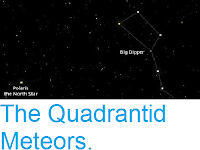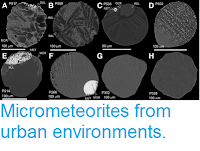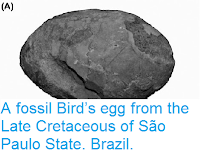Sabretooth Cats, Machairodontinae, were large Felids (Cats) distinguished by their exceptionally long canine teeth and exceptionally wide gapes. They first appeared in the Miocene in Africa and the Middle East and persisted till the beginning of the Holocene, leading to speculation that their demise may have been related to the activities of early Modern Humans. Late members of the group were comparable in size to modern Lions and Tigers, and are presumed to have targeted similarly sized prey, though earlier members of the group were smaller. However one early genus of Sabretooths, Machairodus, did produce similarity large specimens from the Late Miocene onwards, though these animals were less highly specialised than later members of the group, with less prominent teeth and narrower gapes, making their ecology harder to understand.
In a paper published in the journal Vertebrata PalAsiatica in October 2016, Deng Tao of the Key Laboratory of Vertebrate Evolution and Human Origins at the Institute of Vertebrate Paleontology and Paleoanthropology of the Chinese Academy of Sciences, the Center for Excellence in Tibetan Plateau Earth Sciences and the Department of Geology at Northwest University, Zhang Yun-Xiang, also of the Department of Geology at Northwest University, Zhijie Tseng of the Division of Paleontology at the American Museum of Natural History and Hou Su-Kuan, also of the Key Laboratory of Vertebrate Evolution and Human Origins at the
Institute of Vertebrate Paleontology and Paleoanthropology of the
Chinese Academy of Sciences, describe a new specimen of the Sabretooth Cat Machairodus horribilis from the Late Miocene Hipparion Red Clay of Wudu County in Gansu Province in northwestern China.
The new specimen is a skull assessed to be an adult based upon the eruption and wear of the teeth and the fusion of the bone sutures. The specimen is 415 mm in length, longer than the previous largest described specimen of the species, at 353 mm, and also the previous largest previously described member of the genus, a specimen of Machairodus giganteus measuring 355 mm.
Skull of Machairodus horribilis from Longjiagou (Wudu, Gansu Province, China) (A) dorsal view; (B) reconstruction in dorsal view; (C) lateral view; (D) reconstruction in lateral view; (E) ventral view; (F) reconstruction in ventral view Abbreviations: ab. auditory bulla; apf. anterior palatine foramen; C. upper canine; coc. central occipital crest; eam. external auditory meatus; F. frontal bone; fls. fossa for lacrimal sac; fm. foramen magnum; fpp. frontal postorbital process; gf. glenoid fossa; I3. upper third incisor; if. infraorbital foramen; M. maxillary bone; M1. upper first molar; mf. maxillary foramen; mp. mastoid process; mrb. median ridge of the basioccipital; N. nasal bone; nfs. naso-frontal suture; no. nasal opening; oco. occipital condyle; ocr. occipital crest; opf. optic foramen; orf. orbital foramen; P2. upper second premolar; P3. upper third premolar; P4. upper fourth premolar; pc. parietal crest; pf. palatine fissure; pg. palatine groove; plf. posterior lacerated foramen; Pm. premaxillary bone; pn. posterior nares; pog. postglenoid process; pp. paroccipital process; pr. palatine ridge; prg. preglenoid process; sc. sagittal crest; spf. sphenopalatine foramen; tc. temporal crest; tf. temporal fossa; zpp. zygomatic postorbital process. Deng et al. (2016).
All large modern predatory Mammals are capable of taking prey larger than themselves, and indeed need to do so to meet their energetic requirements. This is is also thought to have been the case with the large Sabretooth Cats of the Pleistocene, although their hunting technique is thought to have been somewhat different to that of modern Big Cats, relying on a slashing bite that caused the prey to bleed to death, rather than a suffocating death grip. However members of the genus Machairodus lacked the heavy musculature and wide gape of later Sabretooths, being rather slender in build and having a gape of about 70° rather than the 120° of the later Smilodon. This would seem quite unsuitable for bringing down much larger prey, suggesting that Machairodus must have had a different feeding strategy.
The Mammalian fauna of the Hipparion Red Clay of Wudu County is well extremely well known, giving this locality the potential to provide insight into the feeding ecology of Machairodus horribilis. The only potential prey species larger than Machairodus horribilis available were the Giraffes Samotherium and Honanotherium, which appear to have been much to large to have been targeted by Sabretooths (modern Lions seldom target Giraffes either). However the area was home to large herds of the short-legged Horse Hipparion platyodus, living in a fairly open steppe environment. Most Cats are essentially ambush predators, reliant on seizing and overpowering prey quite quickly, and the large Pleistocene Sabretooths are generally assumed to have hunted in a similar fashion. However the open grassland ecosystem preserved in the Hipparion Red Clay would appear to have been poorly suited to such a strategy, but would have been a good environment for a predator capable of running down smaller prey bursts of high speed activity in a manner similar to that of a modern Cheetah, then killing it with a slashing bite. This in turn suggests that such a strategy may have been typical of the earliest members of the Machairodontinae, with members of the genus Machairodus able to reach large sizes early in the group's history due to an available source of large, relatively slow prey, but other members of the group not reaching similar sizes until Thieu had switched to an ambush-hunting strategy.
See also...
Follow Sciency Thoughts on Facebook.
























































